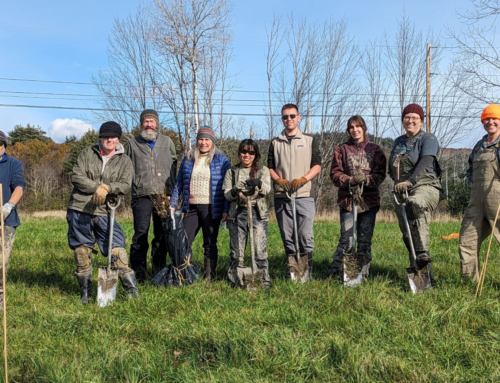Greenfield, MA – Trash has now reached every corner of the globe by moving along waterways and transported by ocean currents. By some estimates, ocean trash covers as much as 40% of the ocean surface. Thanks to the hard work of local Source to Sea Cleanup volunteers, local river trash will never have the chance to reach the Long Island Sound, the Atlantic Ocean, and the large floating garbage patches around the world. Thousands of Source to Sea Cleanup volunteers head out every fall to remove tons of trash along rivers, streams, parks, boat launches, trails and more in all four states of the Connecticut River basin (NH, VT, MA, CT). Organized by the Connecticut River Watershed Council (CRC), the 19th annual Source to Sea Cleanup will be held Friday & Saturday, September 25 & 26, 2015. For more information or to find a cleanup group near you, visit ctriver.org/cleanup.
“Healthy rivers are so important because they contribute so much to our economies and to the beauty and enjoyment of our communities,” says Alicea Charamut, CRC River Steward and Cleanup organizer. “But trash destroys the beauty, health, and safety of our rivers. Plastic and Styrofoam, in particular, have become a major concern.” Single-use plastic bags, micro-beads, and Styrofoam pieces are too small or break down too quickly to be cleaned up easily. Wildlife mistake this trash for food and become sick or die from eating it. Or the trash makes its way to the ocean and contributes to huge floating garbage patches.
“Our goal is to keep trash and tires from getting in our rivers in the first place and to eventually put ourselves out of the business of cleaning up our rivers” notes Charamut. “In addition to coordinating volunteers to clean up trash, CRC also collects data from cleanup groups about the amount and types of trash they find. This data supports year-round advocacy efforts and informs policies and legislation that will keep waste out of our rivers.” CRC supports a ban on Styrofoam products—especially Styrofoam dock supports, in favor of enclosed foam or non-foam dock materials—as well as reducing the use of and increasing the recycling of plastic bottles and plastic bags. CRC is also working with river states on extended producer responsibility (EPR) systems that hold producers responsible for free and easy disposal by consumers of items like tires, paint cans and appliances.
“The Connecticut River is New England’s largest river and provides more than 70% of the fresh water to the Long Island Sound,” says CRC Executive Director Andrew Fisk. “Cleanup volunteers have removed more than 897 tons of trash just from the Connecticut River basin. By participating in the Source to Sea Cleanup, you can make our corner of the planet just that much cleaner.” Anyone with questions or trash tips can contact CRC’s Cleanup Coordinator Alicea Charamut at cleanup@ctriver.org or by calling 860-704-0057.
“Generous financial support from lead sponsors—NRG’s Middletown Generating Station, Pratt & Whitney, and TransCanada— enables us to continue growing the Source to Sea Cleanup so that it has an impact beyond the two days of cleanup,” notes Fisk.
The Connecticut River Watershed Council works to protect the watershed from source to sea. As stewards of this heritage, we celebrate our four-state treasure and collaborate, educate, organize, restore and intervene to preserve its health for generations to come. Our work informs our vision of economic and ecological abundance. To learn more about CRC, or to join the effort and help protect our rivers, visit ctriver.org.
###







